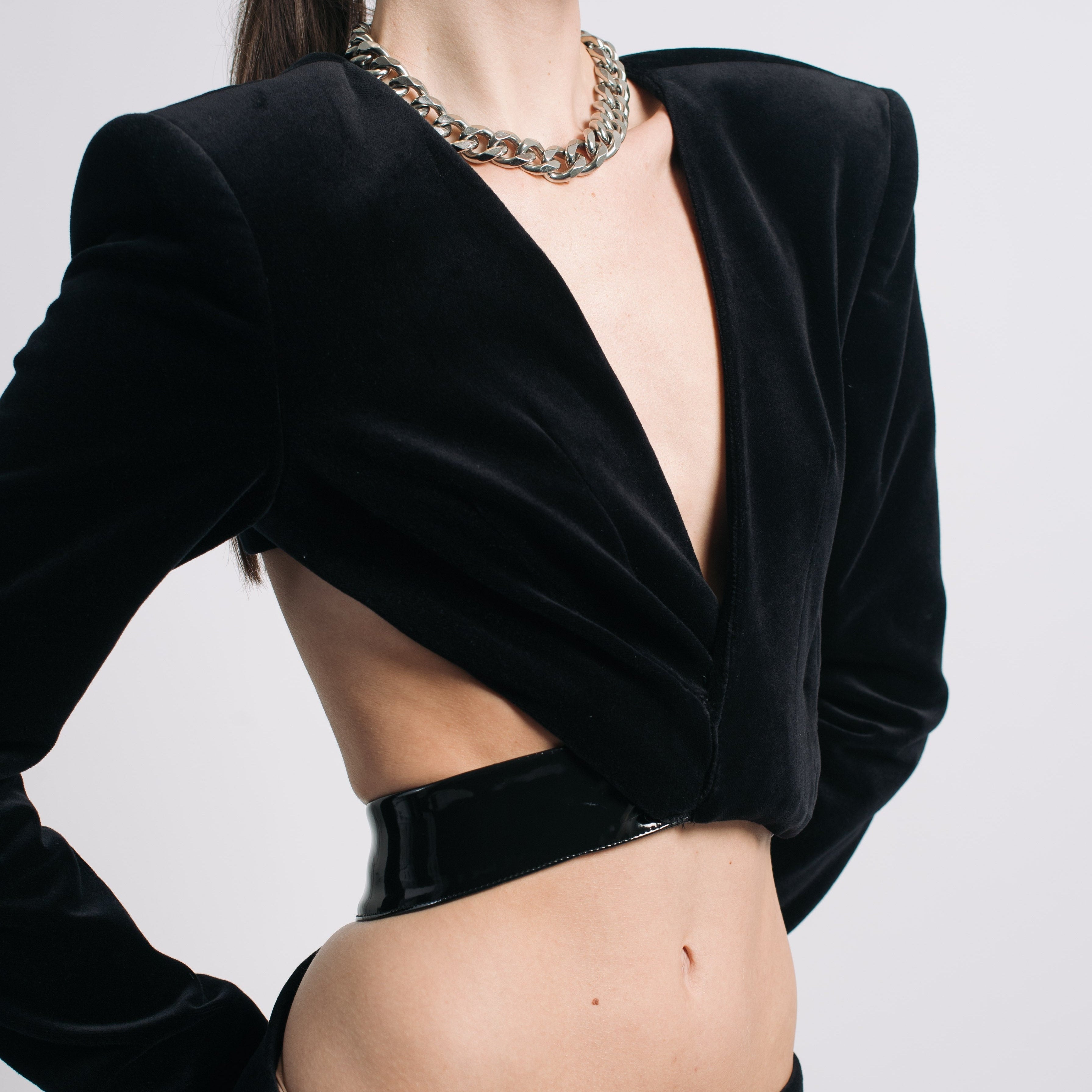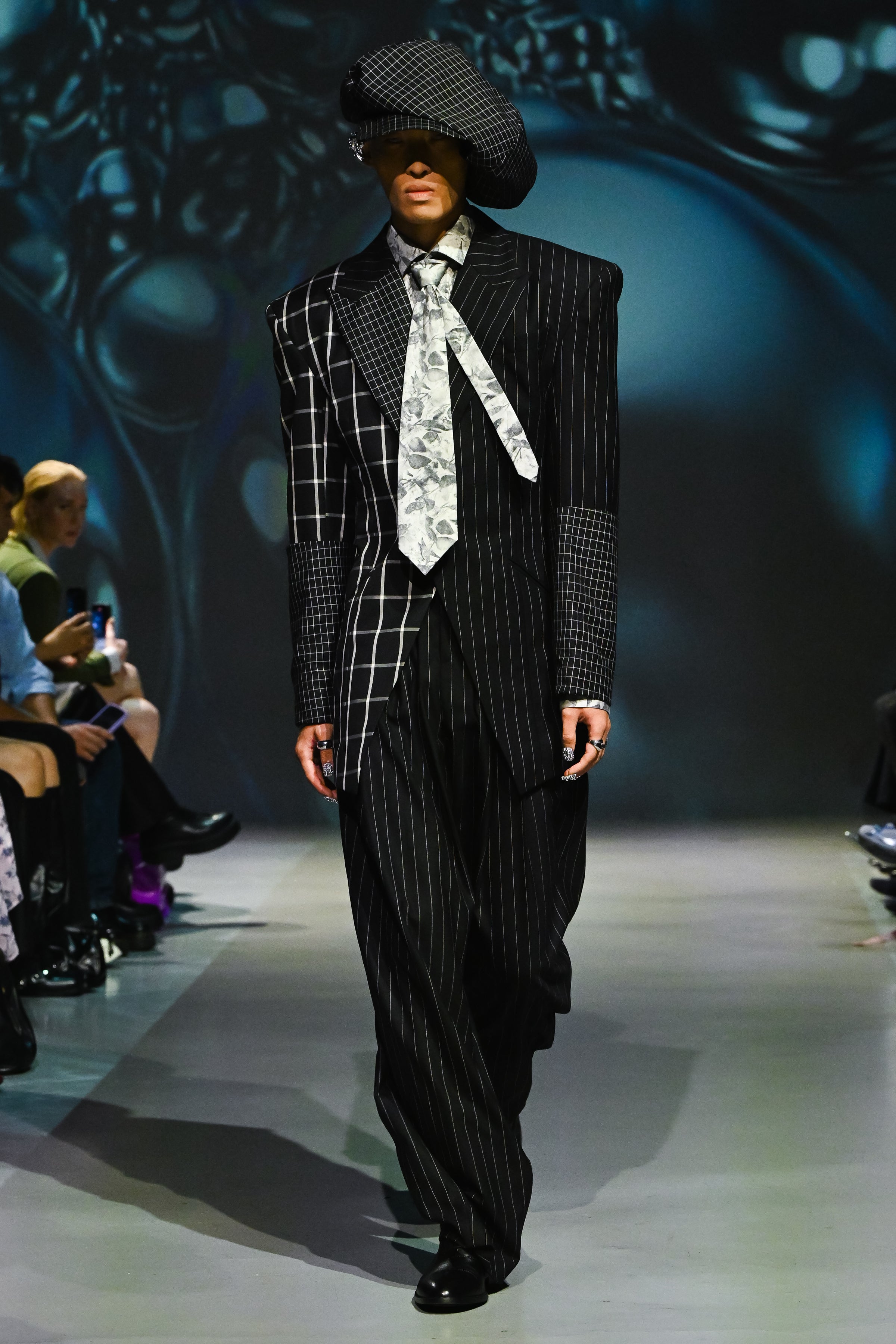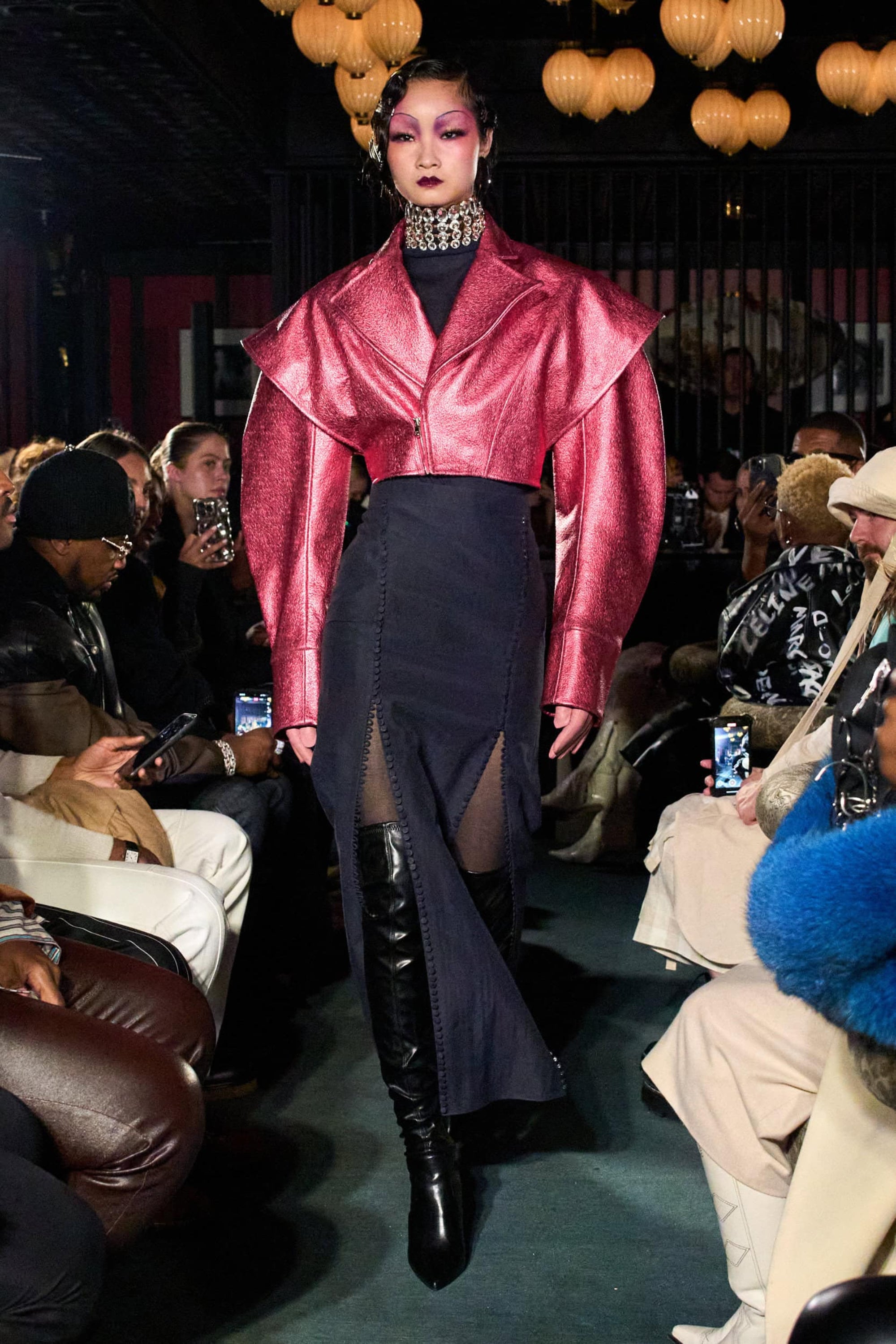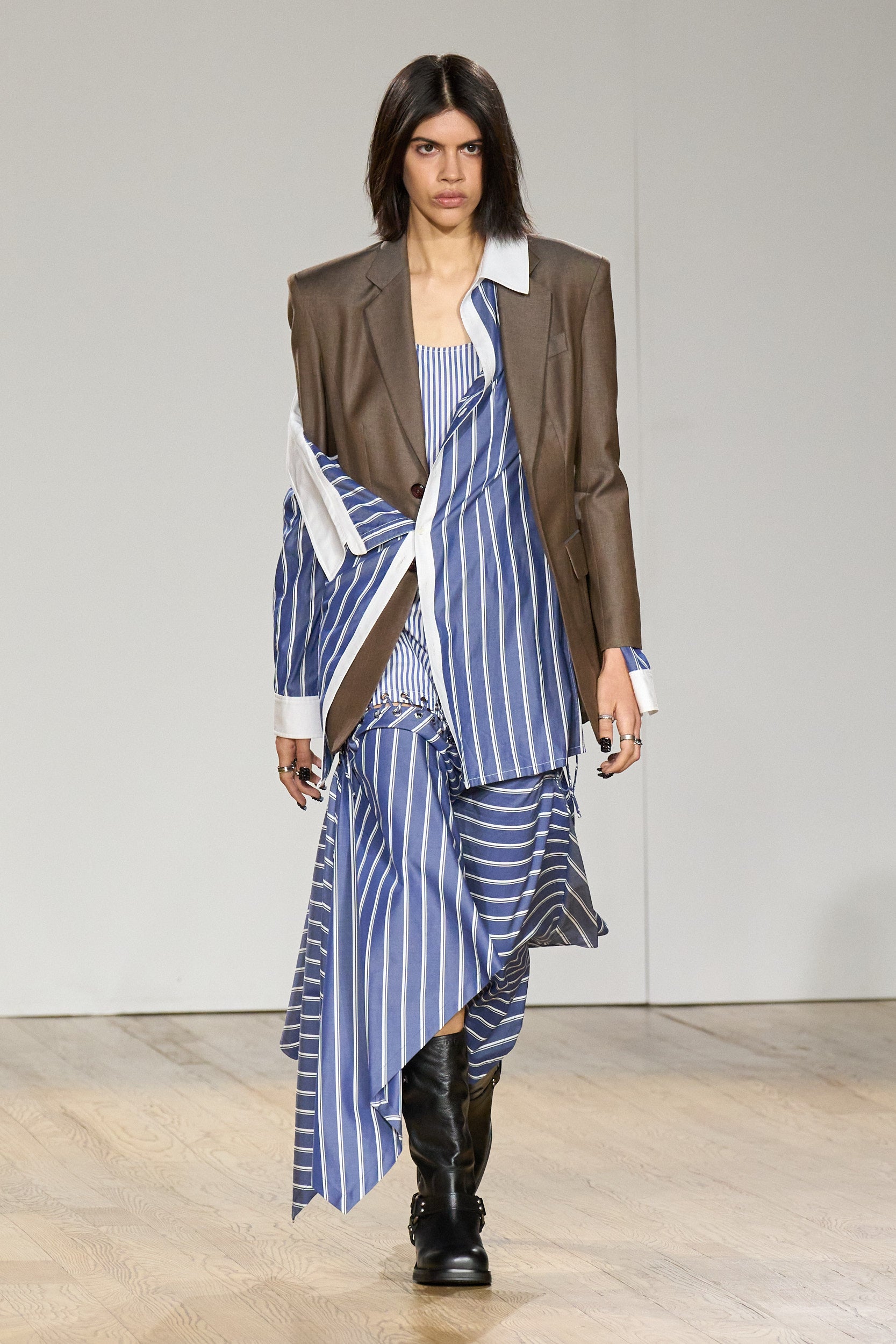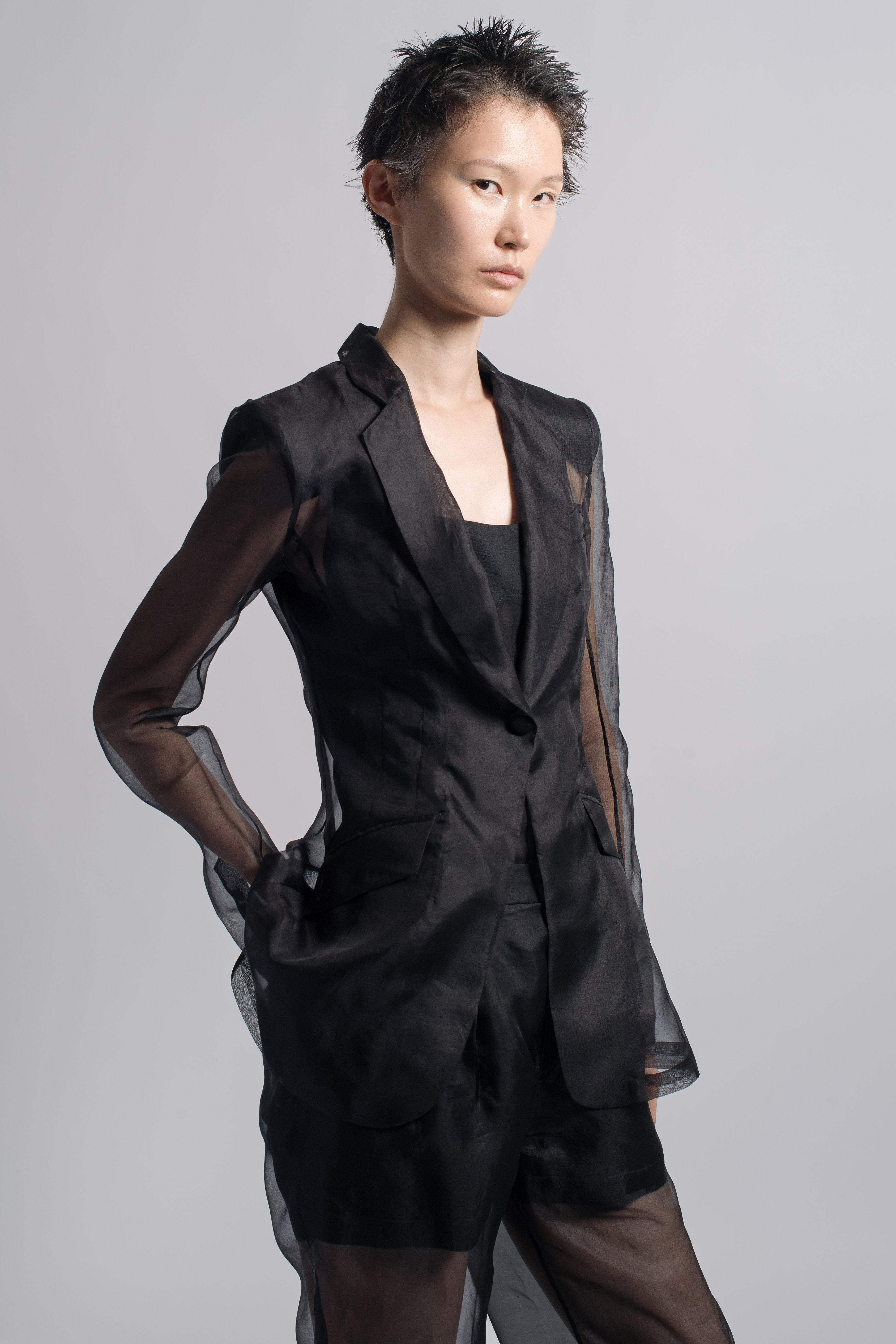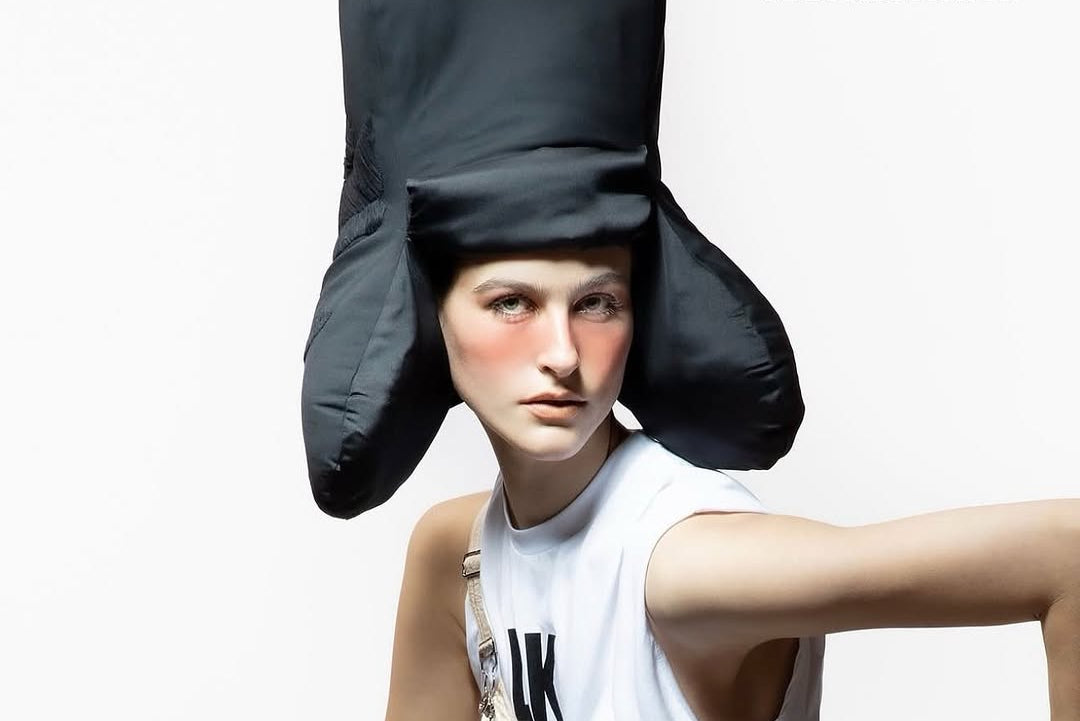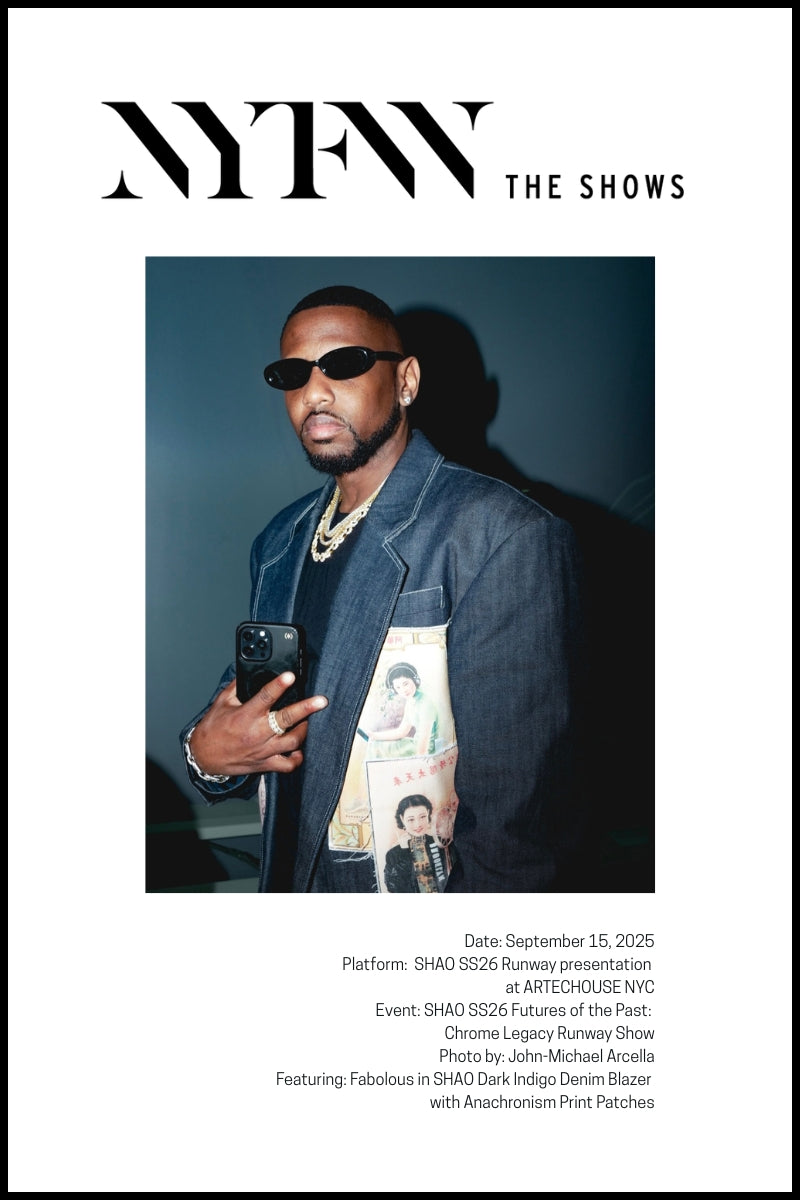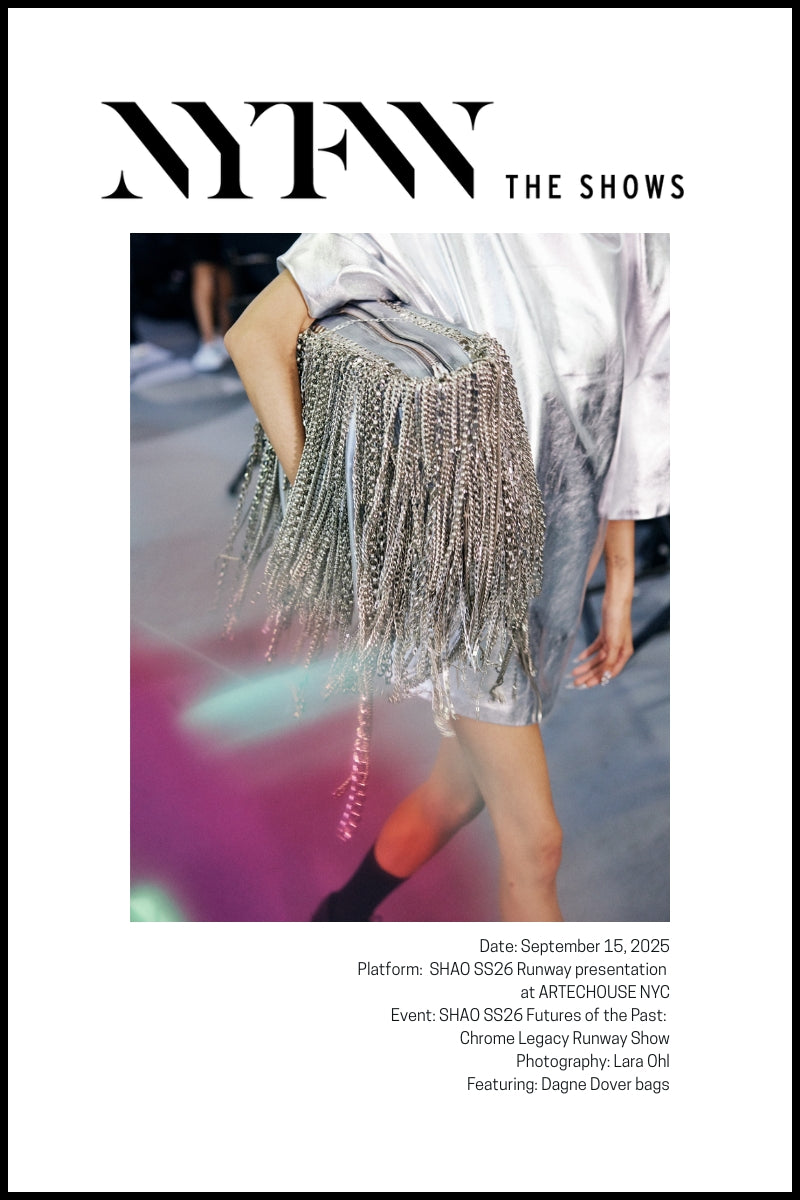ARTECHOUSE NYC has hosted its share of immersive digital experiences, but SHAO's SS26 "Futures of the Past: Chrome Legacy" presentation transformed the venue into something entirely new.
The show opened with a ripple. AI-generated chrome textures swept across every surface of the space, liquid chrome cascading down walls and pooling across floors. As the first model emerged, the projections responded, shifting from mirror-smooth surfaces to fractured geometric patterns. This wasn't decoration. It was a second skin for the collection.
Building a Chrome Universe
SHAO's approach centered on contradiction. The AI visuals felt simultaneously industrial and organic, hard-edged yet fluid. Metallic textures morphed throughout the presentation, at times suggesting armor plating, then dissolving into something that resembled living tissue. The effect created an environment where past and future collapsed into each other.
Each projection sequence had purpose. Chrome surfaces reflected imagined cityscapes as models presented structured pieces. When softer silhouettes appeared, the AI responded with flowing, almost biological forms. The technology read the room, so to speak, creating visual echoes of what walked the runway.

Why ARTECHOUSE
Traditional runway venues have their limitations. ARTECHOUSE offered SHAO the infrastructure to execute a genuinely immersive concept: multiple projection surfaces, spatial audio, and the technical capability to sync everything in real time. The space allowed for 360-degree visual environments that responded to movement and timing.
Attendees didn't sit in rows watching a linear show. They moved through the space, surrounded by the Chrome Legacy world. Some projections appeared only on peripheral walls. Others covered the floor beneath the models' feet. The experience demanded attention from every angle.
Technology in Service of Design
What distinguished SHAO's presentation from other Fashion Week AI experiments was restraint. The projections amplified rather than competed. When bold pieces came down the runway, the AI visuals receded into subtle texture. When minimalist looks appeared, the technology provided drama. This balance required careful choreography between the creative team and the technical execution.
The Chrome Legacy concept hinged on this symbiosis. SHAO asked: what if our digital environment could be as considered as our garment construction? What if projection mapping could function like fabric choice? The result suggested new possibilities for how designers communicate their ideas beyond the clothes themselves.

Setting a New Standard
Fashion Week saw plenty of AI integration this season, from virtual try-ons to generated imagery. SHAO took a different route. Instead of using AI to replicate or replace existing elements, they explored what the technology could uniquely offer: real-time responsive environments that shift with the show's rhythm.
The industry continues wrestling with how AI fits into creative practice. Questions about authenticity and authorship aren't going away. SHAO's presentation offered one answer: use the technology to create experiences impossible through traditional means, but keep human artistic intent at the center.
Chrome Legacy will likely influence how designers think about presentation spaces. It demonstrated that venue selection and environmental design carry as much weight as the collection itself. SHAO didn't just show clothes. They built a world, and AI gave them the tools to make that world respond and breathe.
For those who attended, the show left a specific impression: this is what happens when technology serves a clear creative purpose rather than chasing trends. SHAO understood their concept, chose their tools accordingly, and executed with precision. In a season full of AI experiments, that clarity made all the difference.
